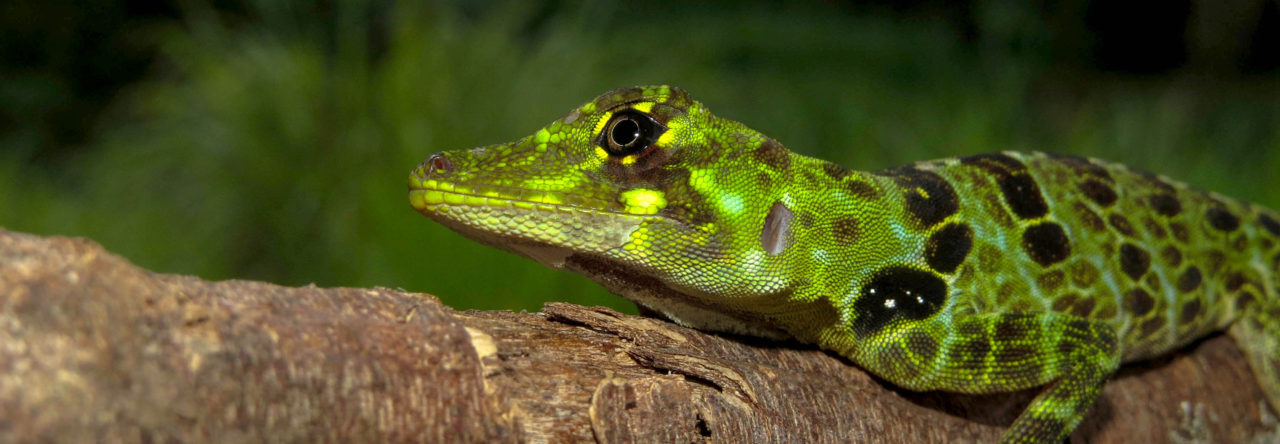Despite the intense study of all things anoles for several decades, some aspects of their natural history are not all that well known. For example, the mating behavior of most species has not been described, and egg-laying behavior has been documented for only a few species.
In the most recent issue of IRCF Amphibians & Reptiles, Alfonso et al. take a small step to remedy this situation by describing these behaviors in the Cuban crown-giant anole, A. smallwoodi. The mating observations are from a year’s fieldwork by the senior author, whereas the observations of egg-laying are from the captive husbandry efforts of second author Veronika Holanova.
I was particularly interested in the description of how gravid females come down to the ground and poke around with their snouts until they find just the right spot, at which point they dig a hole with their snout, lay the egg, and then cover it up by pushing soil over it with their snout and forelegs.
- Evolution in Real Time on Lizard Island - March 23, 2025
- Spider Snags Adult Anolis osa - March 22, 2025
- An Homage to the Green Anoles of New Orleans - March 21, 2025



David Heckard
I have observed A. smallwoodi actually seat the egg into the substrate with their nose. They beat it repeatedly down into the ground before covering the egg. Captive conditions. Lousy pic, but you can tell by the blurred head how fast she is hitting it.
James Stroud
Wow David, that is an incredible observation. In captivity also?
David Heckard
Yes, captive.
Larry yates
I’ve seen one egg, by my lizard at the beginning of this month. Can someone tell me how many and how often they lay eggs?
Chuck Horne
If you’re talking about a knight anole, my experience is every 6-8 days a female will lay one egg. From a healthy, mature animal you can probably expect 10-12 eggs, sometimes considerably more (one of my females laid at least 20 eggs last year).
Chuck Horne
Hi, below are two links (YouTube and Instagram) to mating and egg laying behavior of my smallwoodi.
https://www.youtube.com/watch?v=fgMIfjbnnG4
https://www.instagram.com/p/BPQaucwDWj8/?taken-by=knightanole
Joshua Hall
Hey Chuck, they are talking about Smallwoods Knight Anole (Anolis smallwoodi sp)
Thanks Josh Hall
chuck horne
Thanks Josh!
chuck horne
Greetings! Have there been any studies on incubation temperature determining sex in anoles? My hobbyist’s experience last year with A. equestris seemed to produce all hatchlings with crossbands – many in the hobby believe this is an indicator for females (I departed with all of them as babies/juveniles so don’t know their adult sex). This year, my first 3 A. smallwoodi smallwoodi have hatched with crossbands, resulting in the same discussion in groups on FB. I’m using a hobby-grade incubator/thermostat set at 84f, with a + or – 2 degree margin. Just curious! Thanks for your valuable time!